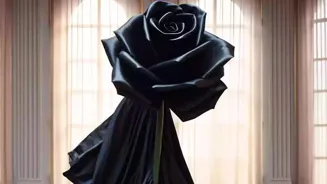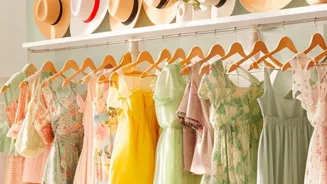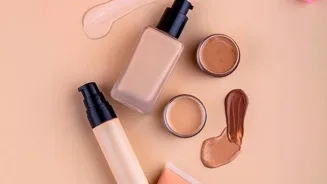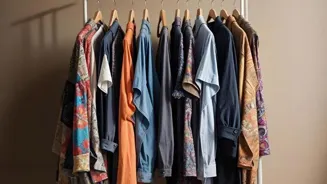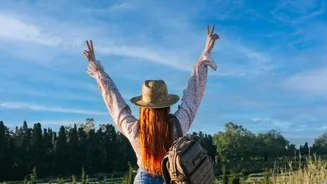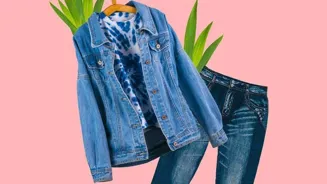Exploring Music's Impact on Fashion Trends: From Jazz to Hip-Hop. Dive into eras where melody meets wardrobe!
From the swinging sixties to the modern-day hip-hop scene, music has always had a symbiotic
relationship with fashion. Music genres provide a backdrop against which fashion trends evolve and artists become style icons, influencing what people wear and how they express themselves.
This influence isn't just about mimicking a favourite singer; it's a deeper connection where music's rebellious spirit, cultural statements, and artistic expression are translated into wearable art.
This article will explore how music has shaped fashion across different eras, highlighting key moments and iconic figures who blurred the lines between melody and wardrobe.
The rise of jazz and flapper era symbolized women's liberation
The early 20th century saw the rise of jazz, bringing with it the flapper era. Imagine the lively clubs, the energetic music, and the women who dared to break free from traditional Victorian corsets.
The flapper dress, short and loose, allowed for unrestricted movement, perfect for dancing the Charleston. Think fringes, beads, and drop-waist silhouettes. Jazz music celebrated freedom and individuality, and the flapper look became a visual representation of this new, liberated woman.
This shift was more than just clothing; it represented a change in societal norms and expectations of women's roles, mirrored in the music and dance of the time.
The rebellious 1950s rock and roll era reshaped fashion norms
The rock and roll era of the 1950s brought a rebellious edge. It was all about leather jackets, blue jeans, and greased-back hair, inspired by figures like Elvis Presley and Marlon Brando. This was youth culture making its statement, rejecting the formality of previous generations.
Think about the poodle skirts and saddle shoes worn by the girls, a playful contrast to the tough image of the boys. Rock and roll was a force, a sound that challenged the status quo, and the fashion that accompanied it was just as bold.
The era gave birth to a whole new lexicon of style language that is still relevant till this day.
Psychedelic music inspires free-spirited fashion of 60s and 70s
The psychedelic sounds of the 1960s and 70s ushered in an era of free-flowing fabrics, vibrant colours, and bohemian styles. Artists like Jimi Hendrix and Janis Joplin championed a look that was all about peace, love, and self-expression.
Bell-bottom jeans, tie-dye shirts, and floral prints became symbols of this counterculture movement. Fashion took its cue from the music's explorative nature, embracing bold patterns and unconventional combinations.
This era was about breaking free from societal norms and embracing individual creativity, with music being the anthem and fashion the vibrant flag. The Indian influence on the trend was also quite significant with loose kurtas and bandanas becoming popular aspects of the trend.
Punk rock fashion rebelled against mainstream culture in the 1970s
Punk rock in the late 1970s ripped through the music and fashion industry like a safety pin through denim. Bands such as The Sex Pistols and The Ramones championed a dishevelled look that was deliberately anti-establishment, anti-fashion and aggressively confrontational.
Ripped clothing, safety pins, studs, band t-shirts, and combat boots became the uniform of the rebels. Fashion was no longer about beauty; it was about making a statement, challenging authority, and expressing anger.
Punk was a reaction against mainstream culture, and its fashion was a visual representation of this raw energy and discontent.
1980s: MTV, music videos shaped pop culture fashion
The 1980s saw the rise of MTV and the power of music videos. Pop stars had a great influence in deciding what the common masses wore. Madonna turned even a simple cone bra into a global trend. This was the time when fashion crossed paths with music. Hip-hop brought a new wave of style influences.
Kangol hats, bomber jackets, gold chains, and sneakers became urban style. This fusion of music and fashion was driven by the visual medium of music videos, which provided a platform for artists to showcase their music and style.
Music's impact on fashion grows through social media connection
Today, the influence of music on fashion continues to be strong, possibly even stronger due to the internet. Social media platforms like Instagram and TikTok allow artists to connect with their followers directly, creating a constant dialogue about style.
From K-pop groups setting trends with their coordinated outfits to individual artists expressing their unique visions. Music continues to inspire self expression. The relationship of music and fashion ensures that both will continue to evolve with each other.

